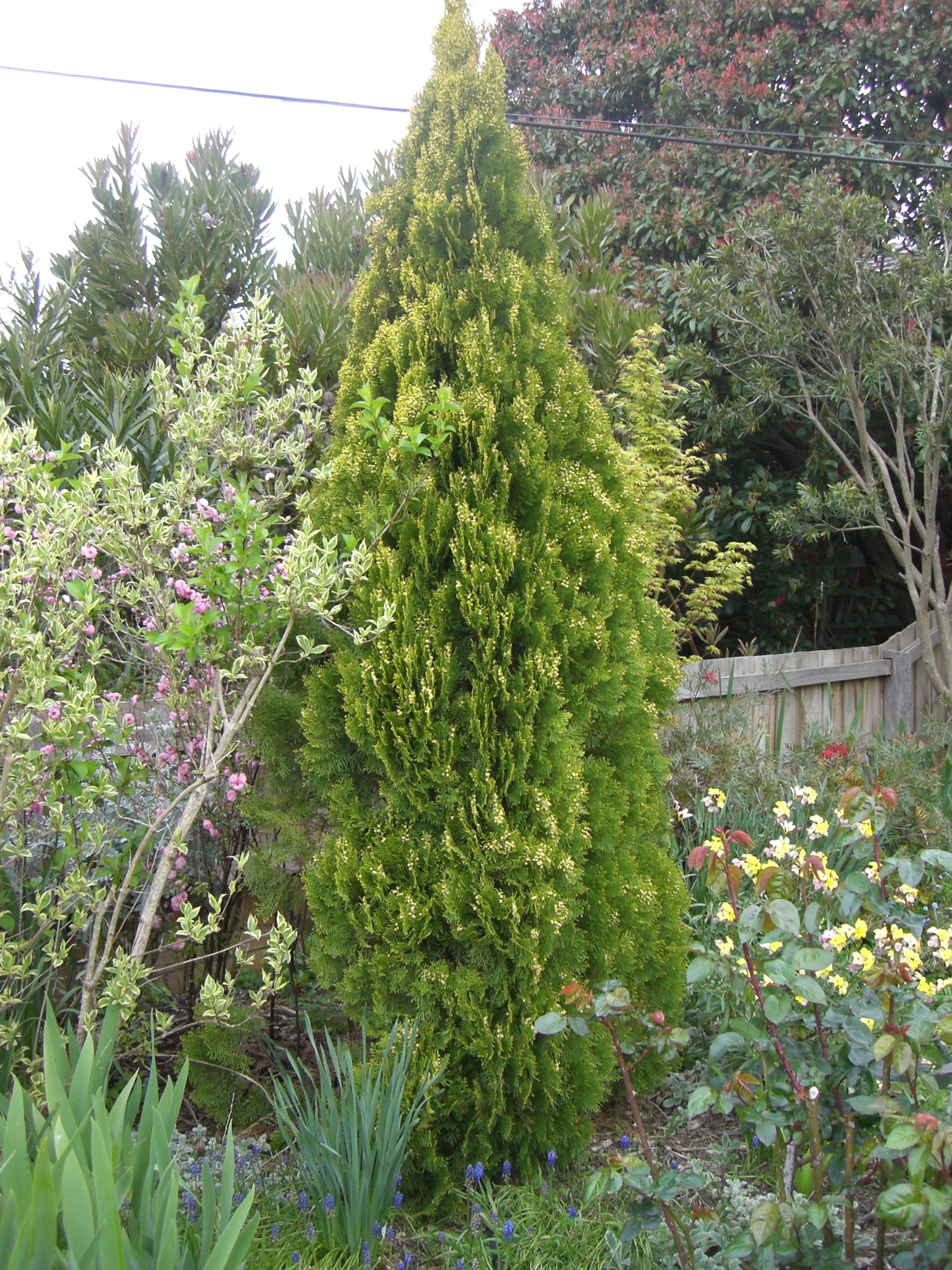
Greek mikros - small, Biota - a former name for Thuja.
Slow-growing conical to ovoid shrubs or small trees with a flame-like appearance when young. Bark fibrous. Foliage in flat, vertical sprays. Leaves about 2 mm long, facial pairs slightly smaller than the laterals. Male cones about 2 mm long, blackish, hardly wider than the branchlets, Oct. Female cones to 2 cm long, ovoid or flask-shaped, fleshy and waxy white while ripening, bluish-brown when mature; scales 6-8, hooked, the lower fertile ones bearing 2-3 wingless seeds, each about 3 mm long.
A genus of one species, formerly included in Thuja as T. orientalis, the only Asian species of that genus and distinguished by the characters listed below.
1 species from N & W China.
More or less vertically arranged foliage sprays with edges directed inwards (hence the common name); leaves hardly aromatic when crushed, in contrast to Thuja which hase all strongly aromatic; cones fleshy at first, flask-shaped, waxy-white, the scales with pronounced hooks at their tips. Each of the fertile scales has 2 or occasionally 3 large, wingless seeds.
Source: (1995). Cupressaceae. In: . Horticultural Flora of South-eastern Australia. Volume 1, Ferns, conifers & their allies. The identification of garden and cultivated plants. University of New South Wales Press.
